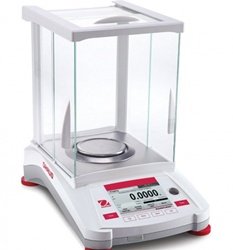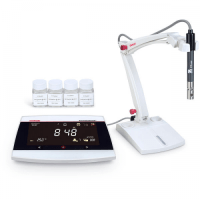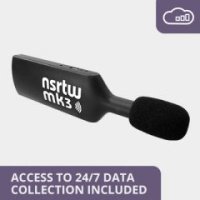Balancing Balances: What Is the Difference Between Analytical, Precision and Microbalances?

Three main types of digital balances are used for many similar scientific tasks, and selecting the right device for your application can be time-consuming. However, knowing the technical and practical differences between digital balance styles will simplify your task. For this reason, Instrument Choice Scientists have created an article that clearly defines and efficiently unpacks the key issues.
What Is a Digital Balance?
Often, you will see the terms "balance" and "scale" used interchangeably – even by manufacturers of scales and balances. Improper use of nomenclature can ‘muddy the water’. To understand the key differences, we need to examine the definitions for both balances and scales.
Digital Scales:
Scales measure weight. Weight is the force of gravity on an object measured using a scale. Depending on gravitational forces, the weight of an object can change depending on your proximity to the centre of the Earth. For example, gravity is weaker at higher altitudes compared to sea level.
The SI unit for weight is Newtons (N). However, most scales will either convert and report the result in mass units such as kilograms.
Digital Balances:
Balances measure mass. Mass determines the amount of matter in an object. An object's mass will remain the same regardless of location, whether you're on Earth or the moon!
The SI unit for mass is Kilogram (Kg).
Types of Digital Balance
Due to the wide range of applications, there is an incredible selection of digital balances capable of precise and accurate mass measurements for professional, scientific, educational, and commercial needs. To make finding the best digital balance for your application more straightforward, our scientists have summarised the key criteria for the three main types of digital balance (see below).
Skip to:
- Analytical Balances
- Precision Balances; and
- Micro and Semi-Micro Balances.
1. Analytical Balance
Analytical Balances are the most common form of highly accurate digital balance designed to measure small samples. The defining features of analytical balances include:
- High sensitivity: Analytical balances detect slight increments in mass. For this reason, they usually require a draft shield and a dedicated mounting area to prevent measurement disturbances.
- High readability: Readability usually ranges between 0.1mg - 0.01mg.
- High accuracy: Analytical balances generally have the highest accuracy level of all digital balances.
- Reduced Capacity: Analytical balances often forfeit capacity for readability. Typically, the capacity of analytical balances is not higher than a few kilograms.
- Calibration: Analytical Balances require frequent calibration. Many analytical balances have both automatic internal motorised calibration and the ability to calibrate with external test weights.
Analytical Balance Applications:
- Medical research
- Pharmaceutical
- Laboratories
- Universities; and
- Production settings.
Analytical Balance Example:
OHAUS AX224 Adventurer Pro Analytical Balance
|
2. Precision Balance
Digital precision balances operate in a similar way to analytical balances. The critical defining features of precision balances are:
- High capacity: Precision balances usually have a higher capacity than analytical balances. Precision balances can have capacities anywhere from 150g up to over 10 kilograms.
- Reduced Readability: The higher capacity results in reduced readability. Precision scales balances typically deliver results of 0.1g, 0.01g or 1mg.
- Lower precision: Although still highly accurate and more precise than everyday scales, digital precision balances are less precise than analytical models - they do not measure low mass objects.
- Extensive variety: Not limited by draft shields, digital precision balances have higher capacity options and are available in more body styles with additional features than analytical balances.
Precision Balance Applications:
- Laboratory and chemistry applications
- Medical and pharmaceutical
- Research and education
- Production; and
- Various industrial tasks.
Precision Balance Example:Pioneer Precision Balance with Internal Calibration (520 g x 1 mg)Product code: IC-PX523Precision balance with a second line display for additional information, internal calibration and USB and RS232 connectivity. Weight capacity of 520 grams (1 mg). Features include:
Specifications Capacity: 520g |
3. Micro and Semi-Micro Digital Balances
Micro and semi-micro digital balances determine the mass of extremely small samples.
- Low capacity: Generally, micro and semi-micro digital balances measure mass to a maximum capacity of 3 - 10 grams.
- Very high readability: Micro and semi-micro digital balances’ readability ranges between 0.1 µg to 0.0001g. As a general rule, microbalances have readouts of six digits and semi-micros with five digits.
- High sensitivity: As with analytical balances, micro and semi-micro digital balances are highly sensitive to environmental conditions - wind and vibrations can significantly influence readings. Microbalances have draft shields and require a designated area to protect against vibrations and other environmental influences.
- Design: Due to the high sensitivity, some microbalances are designed in two parts, with the electronic components located separately from the measuring cell. This feature minimises the influence that the electronics may have on the weighing sample.
Micro and Semi-Micro Balances Applications:
- Laboratories
- Medical Research And Pharmaceutical
- Matter / Filter Weighing; and
- Pipette Calibrations.
Microbalance example:XA 6.4Y.M Microbalance (6.1 g x 1 ug)Product code: IC-XA-6.4Y.M4Y.M microbalance features a modern design that enables high accuracy and fast measurements, with a tight casing for laboratory applications. Features include:
Specifications Capacity: 6.1g |
Conclusion
Digital Balances measure mass. The main variables that define each type of digital balance are capacity, readability, and accuracy – and these differences ultimately influence a device’s end-use.
Browse all Digital Balances at Instrument Choice
For more information or advice on the right digital balance for your application, speak with an Instrument Choice Scientist: Call 1300 737 871 or email [email protected].
Also interesting
At Instrument Choice, we proudly stock over 150 brands of scientific instruments and laboratory equipment. Our mission is to provide our customers with the broadest selection of scientific instruments, all in one place, so you can measure anything and measure everything.
To help you find the best products to suit your application, Instrument Choice Scientists regularly spotlight new products we’ve added to our store so you have a better idea of what’s on offer.
This edition features the brand new range of AquaSearcher Benchtop Meters by OHaus, a series of modern laboratory benchtop meters that excel at putting the users’ experience first.
To learn about the NEW AquaSearcher series of Benchtop Meters - click here

As you may know, Convergence Instruments is a global leader in affordable, high-performance data collection and analysis solutions. The good news is that they have launched a new NSRTW_mk3-Cloud bundle offering the robust NSRTW_mk3 with included access to 24/7 data collection for one year.
Instrument Choice likes to share opportunities with our customers and followers, so we’ve done a deep dive to summarise Convergence Instruments' super-popular NSRTW_mk3 and the powerful Data Collection Service. For convenience, the logger is now bundled with 12 months of access to their cloud platform, so it’s a good time to take a sneaky peak at the NSRTW_mk3-Cloud bundle!
For all the details and how to secure your NSRTW_mk3-Cloud package– click here.


